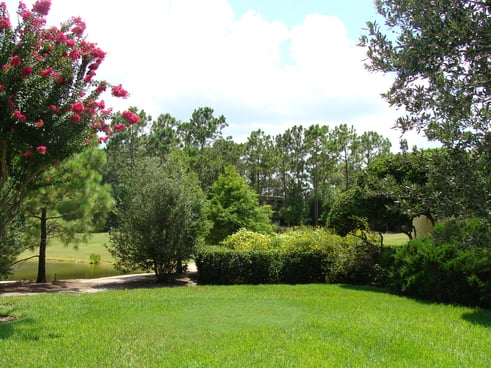
Home / Here on Earth / How to Prune Crape Myrtle
Pruning crape myrtle (Lagerstroemia indica) is a common horticultural practice that helps maintain the plant's shape, size, and overall health. Crape myrtles are deciduous shrubs or small trees that are known for their attractive flowers and colorful foliage. They are popular plants in many parts of the world and are well-suited for use in a variety of landscape settings. These have lustrous green levels, which transform into bright colors giving stunning multi-colored and innovative winter architecture. However, the plants tend to exceed the landscape areas hampering the aesthetic values, which brings pruning into the picture.
Why Prune Crape Myrtle?
.jpg?width=491&height=368&name=Jobsites%20035%20(1).jpg)
There are several reasons why pruning crape myrtles is important. One reason is to remove dead, damaged, or diseased branches. Removing these branches helps improve the plant's overall health by preventing the spread of decay or disease to healthy parts of the plant. Pruning also helps to encourage the growth of new, healthy branches, which can help to improve the plant's appearance. Another reason to prune crape myrtles is to maintain their size and shape. Crape myrtles can grow quite large if left unpruned, and pruning can help keep them more manageable. Pruning can also help to maintain the plant's desired shape, whether it is a formal or informal look.
However, before you prune anything, you need to invest some time in exploring the types of plants you have in your space. Study them precisely so that you understand your plant's requirements and the way it helps in cutting conservatively. You can easily go ahead and cut more. Usually, this exercise aims to maintain the proper space main trunks along with some cool bark and the spaces that remain accessible to air and sunlight.
Use the Right Pruning Techniques
When pruning crape myrtles, it is important to use proper techniques to ensure that the plant is not damaged. One key to successful pruning is to use sharp, clean tools. Dull or dirty tools can cause uneven or ragged cuts, which can damage the plant and make it more susceptible to decay or disease. It is also important to make pruning cuts at the proper location. When pruning to remove dead or damaged branches, it is important to make the cut as close to the base of the branch as possible. This will help to minimize the amount of scarring on the plant and will encourage the growth of new, healthy shoots. When pruning to maintain size or shape, it is important to make cuts at a point where the plant will be able to regenerate without becoming overgrown.
Pruning Tools
Some of the key pruning tools include the following:
- A hand pruner that helps in clipping the branches and twigs which are less than half an inch thick.
- Loppers help in cutting the branches a half inch to 1½ inches thick.
- A pruning saw or pole pruner that can help you in cutting branches more than 1½ inches thick.
Types of Pruning Techniques

There are several different pruning techniques that can be used on crape myrtles. However, the types depend upon the specific goals of the pruning and the age and size of the plant. For young crape myrtles, a technique called "heading back" can be used to encourage branching and shape the plant. This involves cutting back the ends of the branches to encourage the growth of new shoots.
For more mature crape myrtles, a technique called "thinning" can be used to remove excess branches and to improve the plant's overall shape. This involves selectively removing branches to create a more open, airy appearance. It is important to be careful when thinning crape myrtles, as removing too many branches can cause the plant to become overgrown or uneven.
Another common pruning technique for crape myrtles is called "renewal pruning." This involves removing a significant portion of the plant's branches, typically around one-third to one-half of the plant's total canopy. Renewal pruning is often used to rejuvenate older crape myrtles that have become overgrown or have lost their vigor. It can also be used to encourage the growth of new, healthy shoots and to improve the plant's overall appearance.
Regardless of the specific pruning technique, it is important to follow proper pruning guidelines to ensure the plant is not damaged. This includes making clean, smooth cuts at the proper location, avoiding over-pruning, and avoiding pruning during times of stress (such as during periods of drought).
Conclusion
Pruning crape myrtle is only sometimes an annual activity. Yet, there is a precise time for accomplishing this job. If you plan to achieve this job, you can certainly try your own. However, calling a professional for the pruning job is always recommended. Consider contacting Down to Earth Landscape & Irrigation, and enjoy a well-maintained, healthy landscape.
